Thanks for your support! If you make a purchase using our links in this article, we may make a commission. And, as an Amazon Associate, I earn from qualifying purchases. See the full disclosure here.
An RV ceramic coating is worth considering if you like that “brand new RV look” and want it to last as long as possible. It’s certainly a pricey option, so the real question is—are RV ceramic coatings worth it?
Well, it’ll undoubtedly make a difference in the shiny new appearance of your RV, and you can apply ceramic coatings to either a towable travel trailer or a motorhome, regardless of class. The thing to keep in mind here is longevity.
If you’re interested in applying a ceramic coating on your RV, this article will cover every aspect of it, including what you can expect in terms of the finished product, costs, benefits, and drawbacks. We’ll walk you through each point so you don’t have to worry about diving in blind.
What is an RV Ceramic Coating?
An RV ceramic coating isn’t paint. It’s a protective coating that preserves and protects the underlying final coat from the original paint job. A ceramic coat consists of a primary, liquid polymer component that’s marine grade, meaning it’s designed to protect against the harshest of elements, typically found out at sea.
That means an RV ceramic coating application protects from corrosion, water infiltration, environmental toxins, salt, UV rays, and a degree of light impacts, scratches, and scuffs. It’s a potent coating and one of the highest-quality protective barriers on the market.
What are the Benefits of RV Ceramic Coatings?
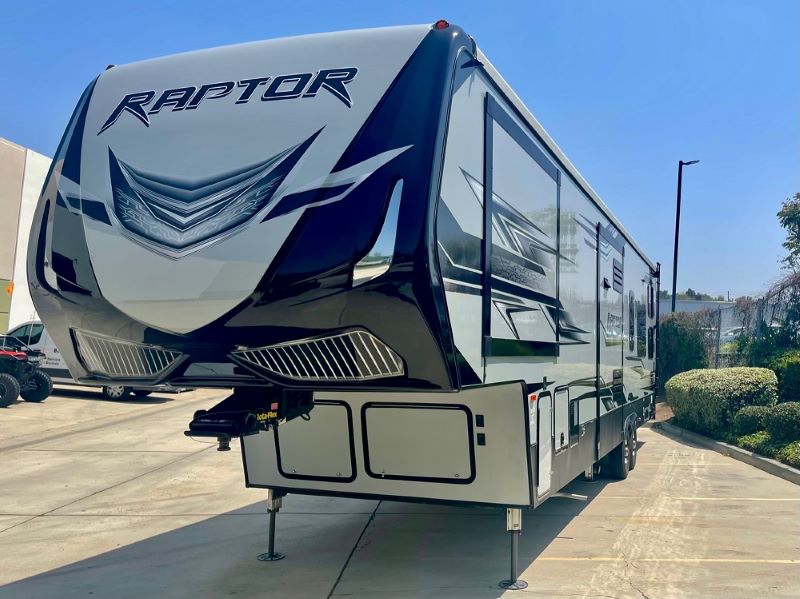
There are many benefits to RV ceramic coatings. For starters, ceramic coatings bond with the surface of the original paint at a molecular level. If you can imagine applying wet concrete to tiny cracks in a driveway and watching as the concrete fills each tiny crack, you’ll have an idea of how it works.
It penetrates the gaps between the molecules of the existing paint, filling it in. This level of bonding is the best you can get because it essentially becomes a part of the original paint coat or clear coat. However, it’s now molecularly stronger to a high degree.
A liquid polymer is simply a chain of molecules, linked together, with each molecule consisting of more than two atoms, which might be silica, SiO2, TiO2, etc. Since ceramic paints consist of these liquid polymers, they bond to surfaces like puzzle pieces, neatly sliding into place.
For the most part, ceramic coatings stick to the silicon dioxide formulations, but if you’re looking for extended longevity, look for the titanium dioxide (TiO2) label as well.
- Ceramic coatings are hydrophobic (repel water)
- Chemical resistant
- Resistant to fading
- Resistant to UV rays
- Create a powerful bond between the ceramic polymers and the existing paint
- Have very low surface tension
- Are Long-Lasting
- Almost self-cleaning
- Higher scratch and abrasion resistance
- Increases the glossy, shiny look
- Temperature resistance
- Deicing agent resistant
When we say “low surface tension,” we’re referring to how slick it is, which leads to another benefit – self-cleaning. Thanks to the low surface tension, it’s more difficult for dirt, dust, and debris to cling to the exterior. It’s like a protective paint coating with the benefit of a very long-lasting wax job.
Also, if you use a deicing agent to keep ice off of your RV, the ceramic coating won’t be harmed as the snow and ice melt away.
Is There a Downside to Ceramic Coatings on RVs?
The biggest downside is the one that shows up on the price tag, whether it’s online or you’re standing in the store. It’s expensive stuff, roughly $30 to $40 per linear foot for a straight ceramic coating and over $100/foot if you include a paint correction.
Ceramic coatings offer the highest and longest degree of protection you’ll find on the market today. You’ll have to fork over a pretty penny if you decide you want to take the plunge.
On a good day, the application process is arduous and time-consuming. It’s not like applying wax or washing your RV. Ceramic coating applications are far more common at the professional level rather than in the DIY crowd. That doesn’t mean you can’t do it.
It just means that most people opt for professional applications instead of doing it themselves. Those are the two biggest downsides. A minor downside is the preparation process. In most cases, DIY projects apply ceramic coatings by hand.
Preparation can take a while, especially if you have lingering wax or just waxed your RV. Every inch of the original wax has to come off. You don’t have to sandblast it or create abrasions in the underlying paint, but you do have to clean the RV extensively.
While applying it that way is perfectly fine, it’s better to spray it on with a spray gun. Since it bonds at the molecular level, it’s better to atomize it during the application process. “Atomizing” is the process of forcing the liquid through a spray nozzle, which disperses it into particulates, creating a stronger bond.
How Long Does RV Ceramic Coating Last?
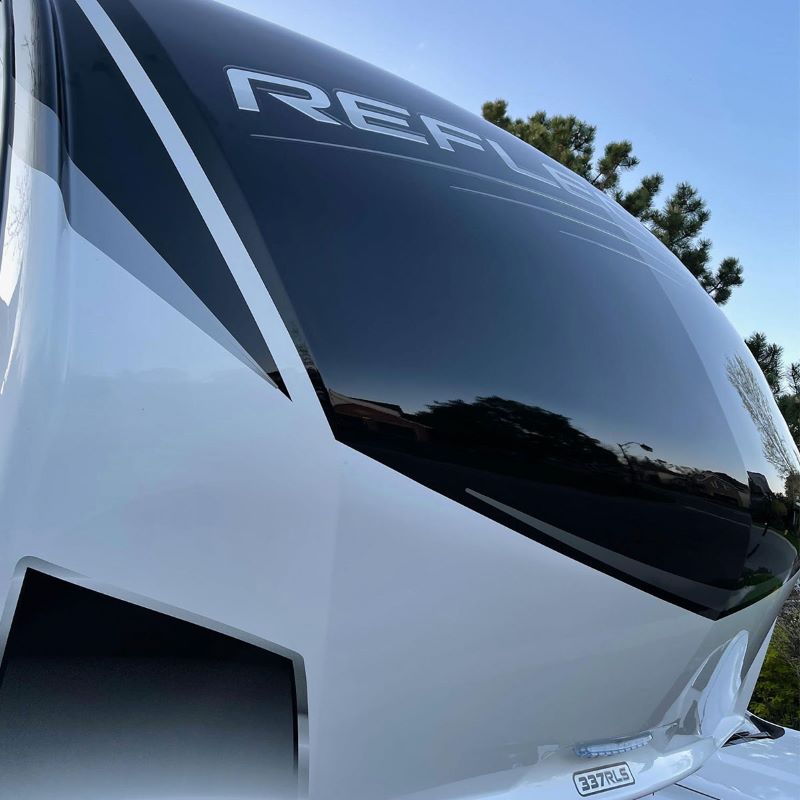
An RV ceramic coating’s longevity depends on a number of factors. First, ceramic coatings are available at professional and consumer levels. A professional grade will always have more longevity than a consumer-grade, thanks to more concentrated formulations.
Second, it depends on how well it’s applied. A single gap in the application is enough to allow corrosion to settle in, making its way underneath the ceramic coating and spreading out across the exterior.
Last, how well you maintain the coating is a determining factor as well. Nothing lasts if it’s not taken care of. That means regularly washing your RV. It’s a good idea to stay away from cheap ceramic polymers. This is definitely one of those products where you get precisely what you pay for.
Assuming you follow all of the above factors, including the occasional wax and spray-downs, a high-quality ceramic coating will last the life of your RV.
How Much Does it Cost?
In terms of cost, it’s all over the place. There are companies that market “lifetime” ceramic coatings, and there are actual, lifetime ceramic coatings for which advertisements are nearly non-existent.
It’s not a cheap investment, but you can find ceramic polymers out there that are cheap, relatively speaking. However, it’s a good idea to stay well away from “too good to be true” offerings in the RV paint and coatings industry. Expect the ultimate price to be significant.
Can You Apply RV Ceramic Coating Yourself?
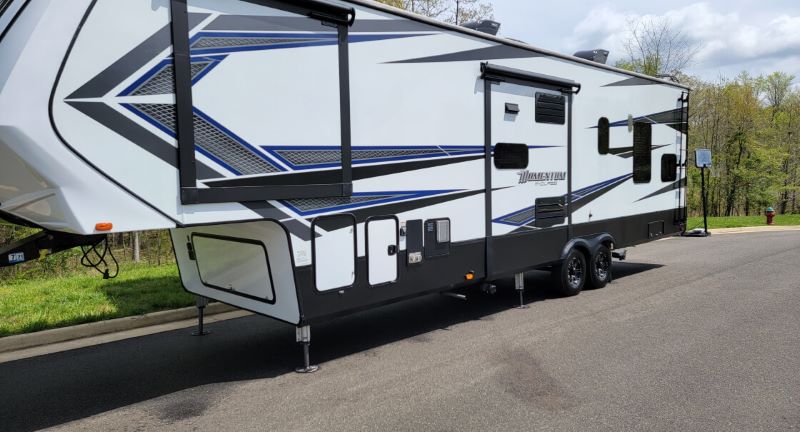
You can certainly apply it yourself, but if you happen to know a first-class journeyman painter, it’s a good idea to at least have a sit-down conversation to pick the painter’s brains. Ceramic coatings designed for easy, DIY applications are consumer-level.
If you want a professional-grade application but do it yourself, you’ll need to purchase the RV ceramic coating product from a big-box retailer and get yourself a spray gun. Ceramic coatings must be precisely applied with an even coat from beginning to end.
If you don’t have experience with applying paint or coatings yourself, it’s a good idea to have a professional apply it. Those that do this type of work as their career will know the ins and outs of the product, how many applications to expect for maximum longevity, and how much is needed.
How Do You Clean a Ceramic-Coated RV?
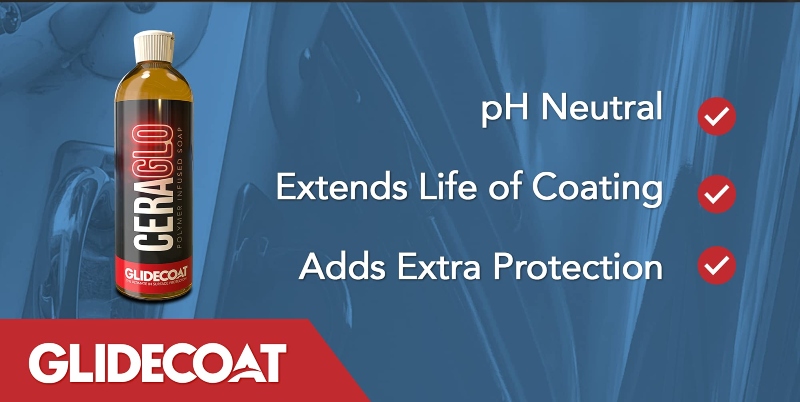
You clean a ceramic-coated RV by being consistent. You don’t have to wash it every day, but you should rinse the RV and dry it after every outing. Pay special attention to bugs since they are an RVer’s greatest enemy when it comes to RV ceramic coatings.
Since bug guts become acidic as they decompose, it’s best to get them off as soon as possible after a road trip. Spot cleaning is highly effective in that regard and will keep the bugs off the front of your RV without having to do a full cleaning every day you travel.
Strongly consider bi-weekly washes and use soaps with a low pH. Glidecoat Ceraglo Polymer Infused Soap is a highly recommended product for washing RVs that have ceramic coatings.
Also, use soft rags or microfiber rather than hard bristles. While ceramic coatings are abrasion and scratch-resistant, nothing withstands constant scratching forever.
Never let it air dry. Use a soft microfiber towel to dry off your RV after you wash it to prevent water spots. Of course, it takes a little more time with a large RV but do the best you can to avoid air drying.
Can I Use a Ceramic Coating Over RV Decals?
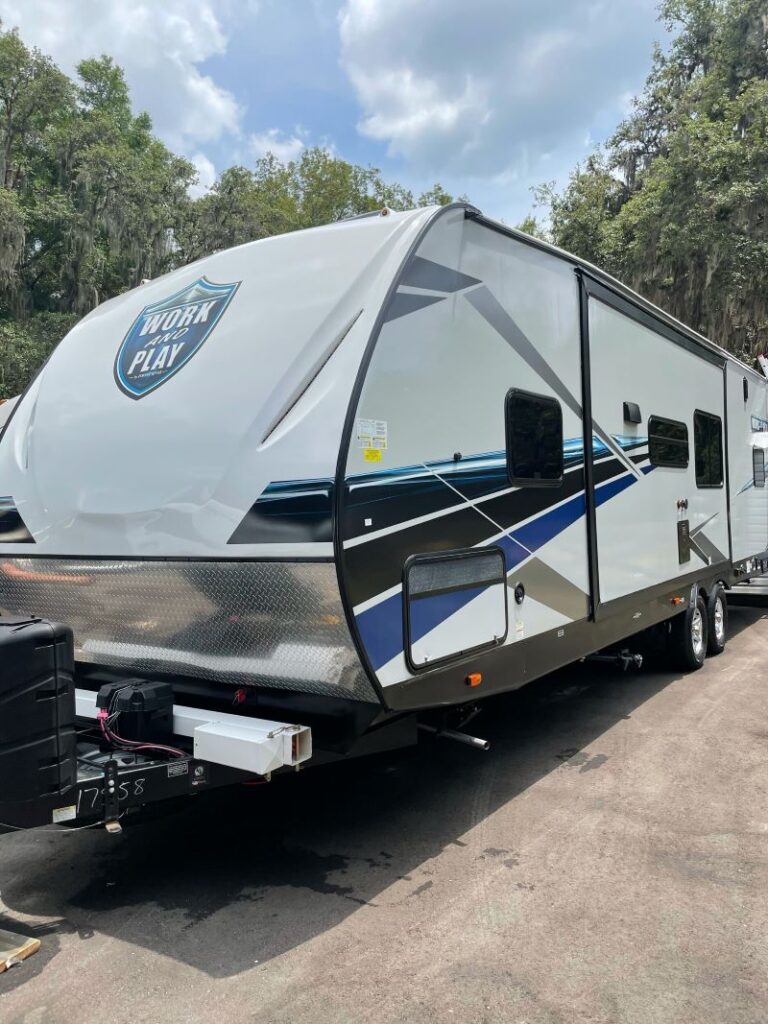
You can use a ceramic coating over RV decals. Vinyl details won’t resist the coating, and it helps protect your decals as well as the rest of the RV. It will be thoroughly protected, with the same degree of longevity as the rest of the RV.
Can You Wax the Outside of an RV?
You can wax the outside of an RV so long as you use a wax that’s specifically designed for RVs. Even among RVs, there are different types to cover corrugate aluminum, fiberglass, or metal materials. Though you want to use a different wax type than that of cars, the application process is roughly the same.
What is the Best Protective Coating for an RV?
RV ceramic coatings are the best protective coatings for an RV. Waxing your RV is certainly beneficial, but it doesn’t hold up for very long. Applying an RV ceramic coating is a long and somewhat difficult process, but re-painting your RV is far more difficult and expensive in the long run.
In fact, the entire painting process (if you want to do it the right way) involves extensive prep work or just taking it to a professional. Professional paint jobs will ultimately cost far more than a professional or DIY ceramic coating.
If you plan on keeping your RV for a long time or you just want to up the resale value for the near term, applying a ceramic coating is a good way to go. Just be sure you take the time to pick the right coating for the job, consult a professional, and take care of it for the life of the RV.
Related Reading:
1. Where Do You Wash a Class A RV?
2. Can I Wash My RV with Dawn Dish Soap?
3. Is Mobile RV Washing and Detailing Worth the Cost?
4. Is Pressure Washing an RV Safe?
Thomas Godwin – Author and Part-Time RVer
Thomas Godwin is a full-time freelance writer with a BFA in Creative Writing, a U.S. Marine, and an avid outdoorsman.
Thomas’s love for RVing began at an early age spending time camping in the family vintage Airstream.
His background and education in writing, combined with his passion for the outdoors, can be seen in publications such as Camper Smarts and Vanlifers, as well as multiple animal and outdoor recreational publications.
When he’s not writing, he’s raising chickens and Appleyard ducks. Thomas also constructs teardrop campers (attempting to anyway) and kayaks the Blackwater River with his wife, two daughters, and his Dobermans.


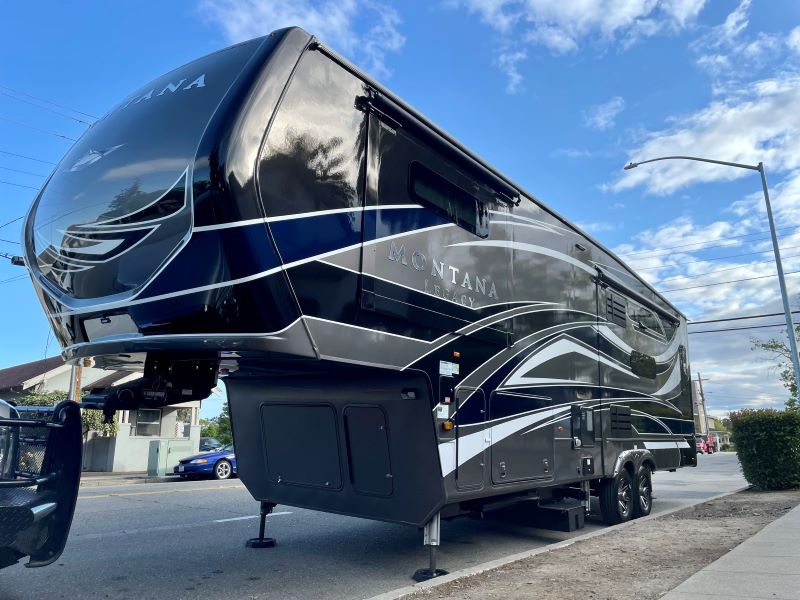
Try Turtle Wax Hybrid Graphene, Contact angle very close to Ceramic, sheeting and lower water spot like Ceramic but at a much lower cost. Of course it doesn’t last as long but Thirty Dollars versus Hundreds of Dollars seems to make sense. Try it, you will be amazed.
Your article is great, however, it doesn’t address surface preparation prior to ceramic application. Does the previous wax coating have to be removed?
Also, a cost range would be very helpful.
Few things you are wrong on, coming from a professional detailer. Ceramic coatings do not contain a polymer. The main ingredient is Silica or the chemical compound is Si02. Then there is a liquid hardner, usually quartz, and a new one from a company called Carpro, contains liqiid diamond. They are scratch resistant, they can easily scratch still, basically 1 or 2mm of extra clear coat like protection. The Silica is the magic that makes the water bead up and sheet off real good, which make it a whole lot easier to clean, because most dirt is repeled.